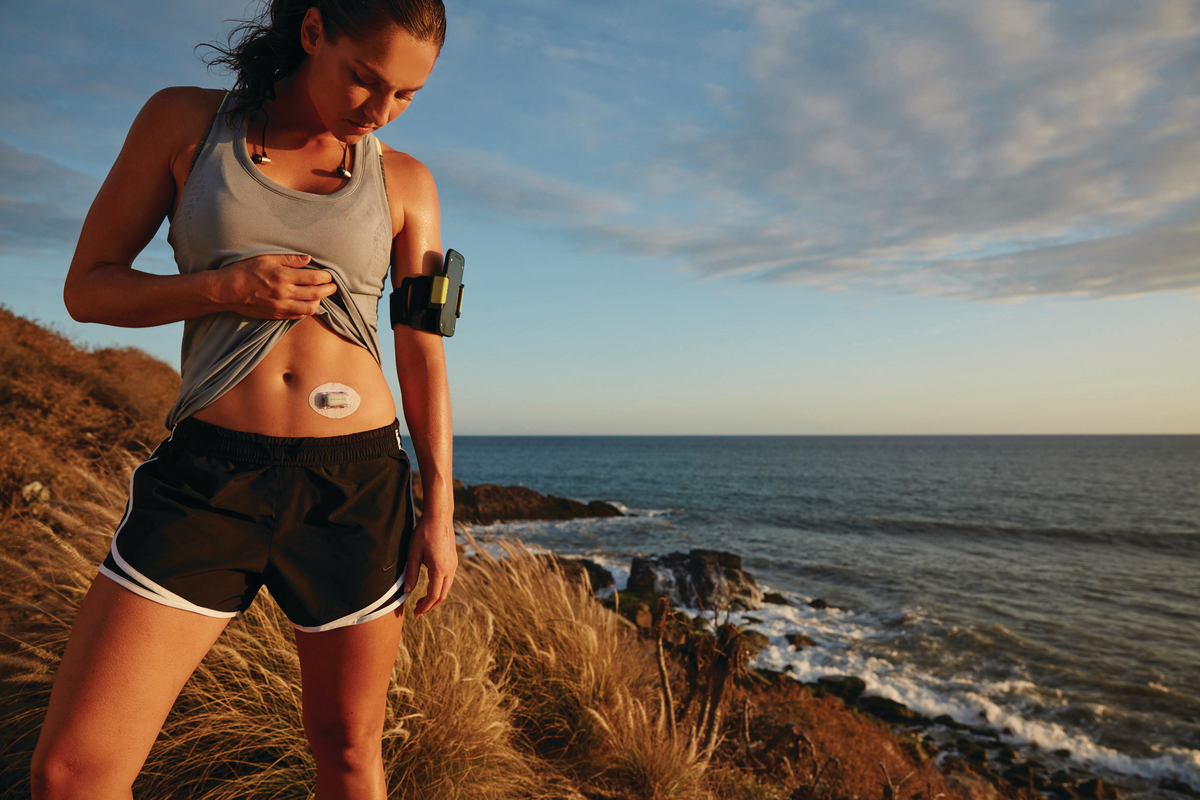- /
- Diabetes explained
- /
- Hypoglycaemia
Hypoglycaemia
What's on this page
Why hypos happen
Hypos can be caused by:
- taking more insulin than you need
- accidentally injecting insulin into a muscle
- delaying or skipping meals
- not eating enough carbohydrate (carb) foods
- unplanned or strenuous activity
- drinking alcohol
- feeling unwell and not eating or drinking
- vomiting or having diarrhea
- breastfeeding.
Exercise and hypos
When you have type 1 diabetes, there are some extra things to think about before, during and after exercise. A hypo can happen up to 48 hours after exercise, even while you’re sleeping. It’s importing to keep checking your blood glucose level during this time.
Hypo symptoms checklist
Hypo symptoms often vary from person to person. But here’s a list of the common symptoms to look for:
Feeling weak, shaky, or like you’re trembling
Sweating more than usual
Feeling lightheaded or dizzy
Having a headache
Struggling to concentrate or noticing changes in your behaviour
Noticing changes in your mood
Feeling very hungry
Feeling tingling or numbness in your lips, tongue, or cheeks
Having a fast heart beat
Having blurry vision
Treating a hypo
If you use continuous glucose monitoring (CGM) and your reading does not match your symptoms, confirm your blood glucose level with a finger prick check.
Step 1
Quickly eat or drink some fast-acting carbs that you find easy to swallow such as:
- glucose tablets equal to 15 grams (g) of carbs OR
- 6–7 regular jelly beans or 4 large jelly beans OR
- 1 tube of oral glucose gel equal to 15 g of carb OR
- ½ a can (150 mL) of regular soft drink, not “no sugar” OR
- 100 mL of Lucozade® OR
- 3 teaspoons of sugar or honey OR
- ½ a glass (125 mL) of fruit juice.
After 10–15 minutes, recheck your blood glucose level to make sure it’s above 4 mmol/L.
If it it’s still below 4 mmol/L repeat step 1 and check your blood glucose level after 10-15 minutes again.
Step 2
If your next meal is more than 15-20 minutes away and your blood glucose level is above 4 mmol/L, eat some longer-acting carbs such as:
- 1 slice of bread OR
- 1 glass (250 mL) of milk or soy milk OR
- 1 piece of fruit OR
- 4 dried apricots OR
- 1 tablespoon of sultanas OR
- 1 small tub (100 g) fruit yoghurt.
For individualised advice on hypo treatment, for example for children or if you’re using an insulin pump and/or a continuous glucose monitoring (CGM) device, talk to your doctor, diabetes nurse practitioner or diabetes educator about how to best reduce your risk of having hypos, and how treat and manage them if they happen.
Emergency response
Make sure those who support you know what to do if you’re unconscious, drowsy, or unable to swallow:
- Lay you on your side and making sure your airway is clear. In first aid this is called the recovery position.
- Don’t give you anything by mouth.
- If your support person knows how, they can give you an injection of glucagon if available.
- Call 000 for ambulance and inform them that you’re unconscious and you have type 1 diabetes. The phone operator may be able to give your support person instructions about how to inject glucagon.
- Stay with you until help arrives.
Top tip
Ask your doctor or diabetes nurse practitioner for a script for glucagon to keep in your hypo kit. Check the expiry date on your glucagon and replace as needed.

Reduce your risk of harm and injuries from hypos
Left untreated, a mild hypo can become a severe hypo and lead to serious complications like unconsciousness or seizures. That’s why it’s vital to inform those around you about your condition and what to do in case of a severe hypo.
Remember to carry a glucagon injection to rapidly raise blood glucose levels, if recommended by your doctor.
- Show your family and friends how and when to use it.
- Always tell your doctor if you have had a severe hypo so they can help figure out the cause and adjust your diabetes management plan to reduce the risk of it happening again.
Managing your hypos
Know your individual hypo symptoms.
Check your blood glucose level if you feel any symptoms.
If you can’t check, stop what you’re doing and treat symptoms as if you’re having a hypo.
Treat a hypo as soon as possible to stop your blood glucose level from dropping even lower.
Carry your hypo kit with you.
Keep yourself and others on the road safe. Don’t drive if your blood glucose level is under 5 mmol/L.
Try to identify why your blood glucose level is low. If you use CGM, readings may lag behind your actual blood glucose level. Confirm the reading with a finger prick blood glucose check.
Make a note of any hypos you do have and discuss these with your diabetes health professional.
Make sure the people around you – such as your family, friends or coworkers – know how to recognise and treat hypos.
Talk to your doctor, diabetes nurse practitioner or diabetes educator about how to treat, manage and reduce your risks of hypos.
Find out more

Read
Read or download our Managing hypoglycaemia fact sheets.

Watch
Watch our Diabetes and driving: a quick guide video.
Making a hypo kit
A hypo kit needs to have a few essential items:
A blood glucose meter, blood glucose monitoring strips, and lancet device (finger pricker).
2-3 fast-acting 15 g glucose treatments like jellybeans, juice or glucose tablets/gels.
Longer-acting carbs for follow-up with a long expiry date such as muesli bars, biscuits or dried fruit.
A glucagon injection if recommended by your diabetes health professional.
Remember
- Restock your hypo kit if you’ve used it.
- Check the expiry dates and replace if need.
- You may decide to have more than one hypo kit, for example, one for the car, one for work or school, one for your gym bag. This means you’ll always have your hypo treatment when you need it.
Recognising reduced awareness of hypos
Some people with type 1 diabetes might not feel the usual hypo warning signs (hypo unawareness), making them harder to detect.
Do you sometimes not realise you’re hypo until your blood glucose level is extremely low?
Do you have hypos without feeling any symptoms?
Top tips
Always wear or carry identification stating you have type 1 diabetes.
Always carry a hypo kit.
Track any hypos you experience to discuss with your diabetes health professionals.
Treat a hypo as soon as possible to stop your blood glucose level from dropping even lower.
If you drink alcohol, have carbs before and while drinking. Check your blood glucose level and eat another carb snack before going to bed.
Before driving and operating heavy machinery check that your blood glucose level is above 5 mmol/L. If you have had a hypo, wait at least 30 minutes until after it's above 5 mmol/L before driving or operating heavy machinery.
Don't over treat hypos by eating more than the recommended amount of carbs.
If you've experienced a severe hypo with loss of consciousness, see your doctor ASAP. They might recommend changes to your insulin or a temporary halt in driving.
Last updated: May 2025